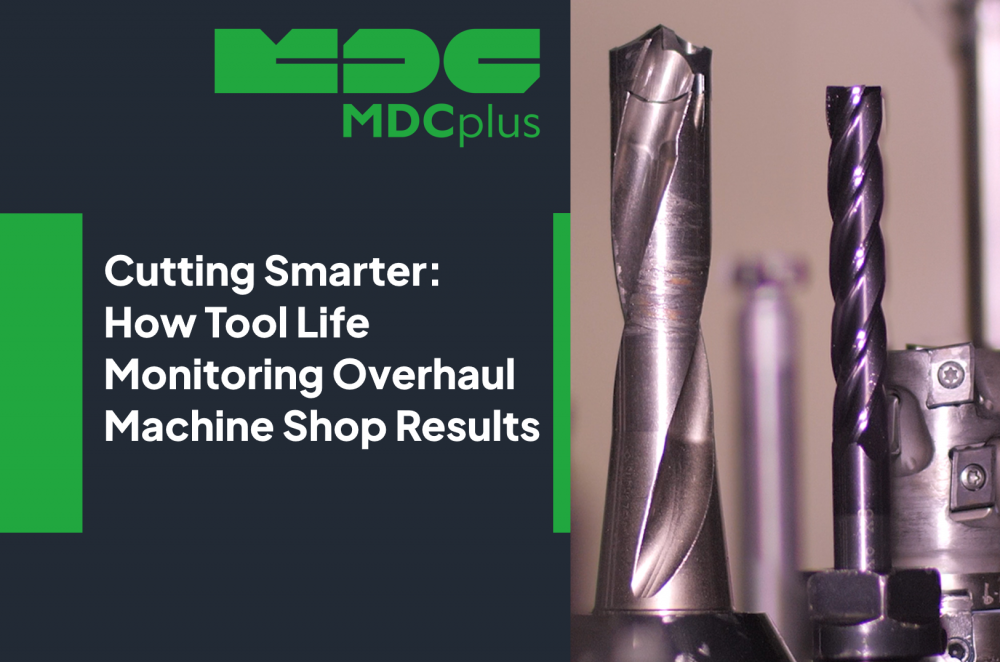Cutting Smarter: How Tool Life Monitoring Overhaul Machine Shop Results
One dull insert, one cracked end mill, or one overused drill can lead to dimensional drift, scrap, broken parts, or even machine damage. That's why modern machine shops are shifting their attention toward tool life monitoring - not as a luxury, but as a core component of reliable, efficient production.
What Is Tool Life Monitoring?
Tool life monitoring is the process of tracking how long a cutting tool has been in use - and how close it is to the end of its usable life. This can be done manually, by logging spindle time or part counts, or automatically, by integrating sensors, spindle load data, or control system counters.
Some systems track tool life in minutes, others by number of parts machined, and more advanced setups combine force feedback, acoustic emissions, or vibration signatures to detect real-time tool degradation.
The goal is simple: replace tools before failure, not after damage.
Why It Matters to Machine Shops
For shops running high-mix, tight-tolerance work, tool failure isn’t just inconvenient - it’s costly. A worn tool can destroy a $1,000 part in seconds. If it breaks mid-cut, it can crash a machine or stall production for hours.
Tool life monitoring prevents these failures by turning guesswork into precision. Instead of relying on a “feel” for when to change a tool, the system gives hard limits, warnings, and alerts when thresholds are reached.
It also supports better scheduling and planning. When tool life is tracked accurately, operators can load the next tool in time, prevent mid-part failures, and avoid last-minute delays.
Impact on Production Reliability
In larger production environments, tool life monitoring plays an even more strategic role. It stabilizes cycle times. It reduces the variance between parts. It ensures that tooling costs are predictable, and that quality holds up from the first part of a run to the last.
Many MES and machine monitoring systems now integrate tool life tracking alongside OEE metrics. This gives planners and supervisors a full picture: not just whether a machine is running, but how close it is to needing a tool change - and whether that change can be made before it impacts output.
In automated cells or lights-out manufacturing, this becomes critical. You can't afford for a tool to fail at midnight when no one’s there to notice.
Real-World Example
A mid-sized aerospace shop running 4-axis mills integrated tool life counters into its cell controller. Previously, tool changes were made conservatively, every 100 parts, just to be safe.
After a three-week analysis, they discovered that most tools could reliably last 170–200 parts. With better tracking, they increased tool usage by 60% without increasing breakage.
The result: $45,000/year saved in tooling cost, a 20% reduction in unscheduled tool changes, and improved confidence running longer shifts unattended.
Secondary Benefits: More Than Just Tool Savings
Tool life monitoring has ripple effects across operations:
-
Quality improvement: Consistent tooling performance means tighter tolerances and fewer rejects.
-
Setup efficiency: Knowing tool status in advance prevents last-minute scrambles or reprogramming.
-
Cost forecasting: Tool usage data supports more accurate quoting and profitability tracking.
-
Process optimization: Deviations in tool life help flag issues with feeds, speeds, or material quality.
Getting Started
You don’t need a high-end system to start. Many CNC controls already offer basic tool counters. With minimal setup, you can log how long each tool is in use, and use alerts or alarms when a threshold is near.
For more advanced needs, integrated systems can pull spindle load data or tool wear indicators directly from the control or monitoring software. The more automated the setup, the less dependent it is on manual tracking - and the more consistent the results.
In a market that rewards speed, precision, and uptime, tool life monitoring gives machine shops a quiet edge. It keeps production flowing, protects equipment, reduces waste, and gives operators the visibility they need to work smarter.
Because in the end, it's not just about how fast you cut. It’s about cutting with control - and knowing exactly when it's time to switch.
About MDCplus
Our key features are real-time machine monitoring for swift issue resolution, power consumption tracking to promote sustainability, computerized maintenance management to reduce downtime, and vibration diagnostics for predictive maintenance. MDCplus's solutions are tailored for diverse industries, including aerospace, automotive, precision machining, and heavy industry. By delivering actionable insights and fostering seamless integration, we empower manufacturers to boost Overall Equipment Effectiveness (OEE), reduce operational costs, and achieve sustainable growth along with future planning.
Ready to increase your OEE, get clearer vision of your shop floor, and predict sustainably?
